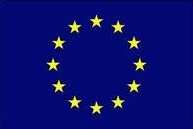Wed, Jul 06, 2011
Analyst Says Emissions Trading Program May Have Unintended
Consequences
While perhaps environmentally well-intentioned, the European
Union's Emissions Trading System (ETS) may have the unwanted
consequence of adding yet another obstacle to business aviation's
anemic recovery. That's the assessment from Aviation Analyst Brian
Foley.

Worldwide business jet deliveries were
already down by 40% in just two years. Now, in a continued slow
aircraft sales environment, would-be buyers are being asked --
told, really -- to spend time sorting through all the implications
of ETS compliance, thus delaying the sales process.
ETS begins January 1, 2012 and will apply to most business jet
flights to, from and within European airspace. Non-European
operators are exempt if they are already part of an ETS program in
their home country.
Yet even before ETS takes effect, its impact is already palpable
-- and chilling. "Earlier this year we were forced to lower our
10-year forecast of business jet deliveries to Europe from 25% of
worldwide production to just 20%", notes industry consultant Brian
Foley. "There's an evident pattern of expanding taxes and
regulations there, including ETS, that will limit that region's
future growth potential. From proposals of a private airplane
passenger "ticket tax" in the UK to user fees for European
airspace, these costs and uncertainties can only act as a
disincentive to own or purchase a business aircraft."

Brian Foley
Because of the way in which ETS is designed to limit greenhouse
gas emissions, business jet operators must face significant new
complexities and costs. For example, they must submit a plan,
monitor and document their emissions, and purchase "credits" in the
event they exceed allowed amounts. General aviation is actually a
very minor contributor to Europe's carbon footprint (much smaller
than airline and military aviation, oil- and coal-fired power
generation, and cars and trucks). Even so, civil penalties will be
imposed where operators fail to comply.
Some of the airlines and their associations have begun
vehemently pushing back against ETS, arguing that it is unilateral
and constitutes an illegal tax. “With enough shared and
coordinated concern, the business aviation community may find this
an opportune time to weigh in a little louder.”
More News
Also: B-29 Superfortress Reunion, FAA Wants Controllers, Spirit Airlines Pulls Back, Gogo Galileo Van's Aircraft posted a short video recapping the goings-on around their reorganiz>[...]
Light Gun A handheld directional light signaling device which emits a brilliant narrow beam of white, green, or red light as selected by the tower controller. The color and type of>[...]
"The journey to this achievement started nearly a decade ago when a freshly commissioned Gentry, driven by a fascination with new technologies and a desire to contribute significan>[...]
"Our driven and innovative team of military and civilian Airmen delivers combat power daily, ensuring our nation is ready today and tomorrow." Source: General Duke Richardson, AFMC>[...]
Aircraft Conflict Predicted conflict, within EDST of two aircraft, or between aircraft and airspace. A Red alert is used for conflicts when the predicted minimum separation is 5 na>[...]
 Airborne 04.16.24: RV Update, Affordable Flying Expo, Diamond Lil
Airborne 04.16.24: RV Update, Affordable Flying Expo, Diamond Lil ANN's Daily Aero-Term (04.20.24): Light Gun
ANN's Daily Aero-Term (04.20.24): Light Gun Aero-News: Quote of the Day (04.20.24)
Aero-News: Quote of the Day (04.20.24) Aero-News: Quote of the Day (04.21.24)
Aero-News: Quote of the Day (04.21.24) ANN's Daily Aero-Term (04.21.24): Aircraft Conflict
ANN's Daily Aero-Term (04.21.24): Aircraft Conflict




